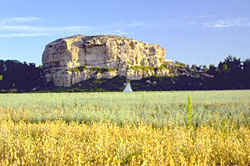Warrior Society: the Koitsenko of the Kiowa

People throughout history have honored their bravest fighting men by including them in elite warrior societies. The Persian Immortals, the Knights of the Roundtable, and Charlemagne's Paladins to name a few. Plains tribes also had elite societies of warriors, and among the Kiowa there was no more elite than the ten warriors who made up the Koitsenko. Warrior training started early for Plains boys. Among the Kiowa, a boy or youth would join the Rabbit Warrior society and begin their training. As they grew into manhood and proved themselves in battle or on the hunt, they were eligible for membership in 5 adult warrior societies, some of which still exist among the Kiowa. Members of these five societies took the lead in battle, on the hunt, and in guarding their people on the camp or trail. These men were also called Dog Soldiers, though they aren't to be confused with the elite Cheyenne society and later tribal band, the Dog Soldiers. Ten select...























